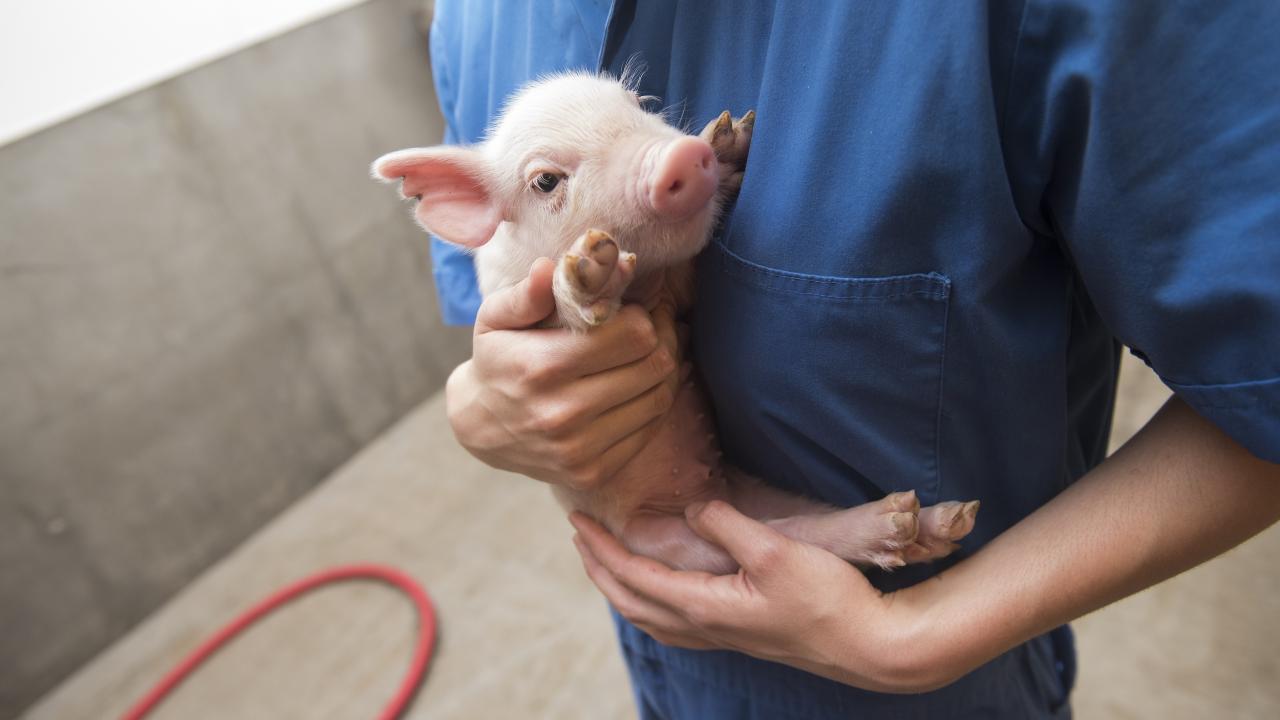
What is the Lifecycle of a Pig in Market Production?
The lifecycle of a hog depends upon the sex of the animal. Given 90 percent of modern hog operations use artificial insemination, most male pigs are raised for meat production, while female pigs are evaluated to be used as breeding stock. In the U.S., more than 129 million pigs are slaughtered annually. It typically takes 22-26 weeks – or 5.5-6.5 months – for a pig to mature from birth to slaughter weight.
Birth to Weaning – 21 days (3 weeks)
All pigs – no matter the sex – have a similar start on the farm. Piglets weigh 2-3 pounds at birth. There are typically 12-13 pigs per litter. Piglets nurse for the first 21 days of their life and weigh 13-15 pounds when they are weaned.
In these first three weeks, farmers will also castrate male pigs, making them barrows. The vast majority of male hogs are castrated because boars (intact males) become more aggressive as they get older, which can become problematic in group housing. Boar taint also affects meat quality and flavor.
Nursery – 42-56 days (6-8 weeks)
After being weaned, piglets are moved to a nursery or finishing barn where they are housed with other piglets from various litters. These barns have specialized temperature controls and ventilation to help support the health of the piglets, which are fed a specially formulated corn and soymeal diet. The piglets eat about 1.5-4 pounds of feed a day and weigh 50-60 pounds by the time they leave the nursery at about 2-3 months of age.
Growing & Finishing – 115-120 days (16-17 weeks)
In the next phase of their lifecycle, these young pigs are moved out of the nursery and into a finishing barn if they were not housed in a nursery/finishing facility. As the young pigs mature, they eat 6-10 pounds of feed daily. In addition to corn and soymeal, these pigs are given vitamins and minerals to ensure the animals remain healthy. At about six months of age, pigs weigh about 280 pounds and are ready for the next phase of their lifecycle. Barrows – neutered males – are typically sold at market, whereas gilts – females that have not yet become pregnant – need to mature slightly to reproduce.
Gestation – 115 days (3 months, 3 weeks and 3 days)
It takes about 32 weeks from birth for gilts to reach the proper age to be bred. Gilts are inseminated, and the pregnancy lasts 115 days – or 3 months, 3 weeks, and 3 days. Once giving birth, gilts are now called sows. After weaning their piglets, sows come into estrous within 3-5 days. If a sow is not bred, she will return to estrous about 21 days later.
An average sow will raise 3-5 litters in her lifetime, with farmers aiming to average two litters per sow per year. Sows leave the herd due to old age, reproductive failure, poor performance, illness, or injury. Poor performance can be classified as small litter size, high preweaning mortality, or low birth weight.
The CLEAR Center receives support from the Pork Checkoff, through the National Pork Board.
